TSUYOKU CRITERIA(Target Performance)
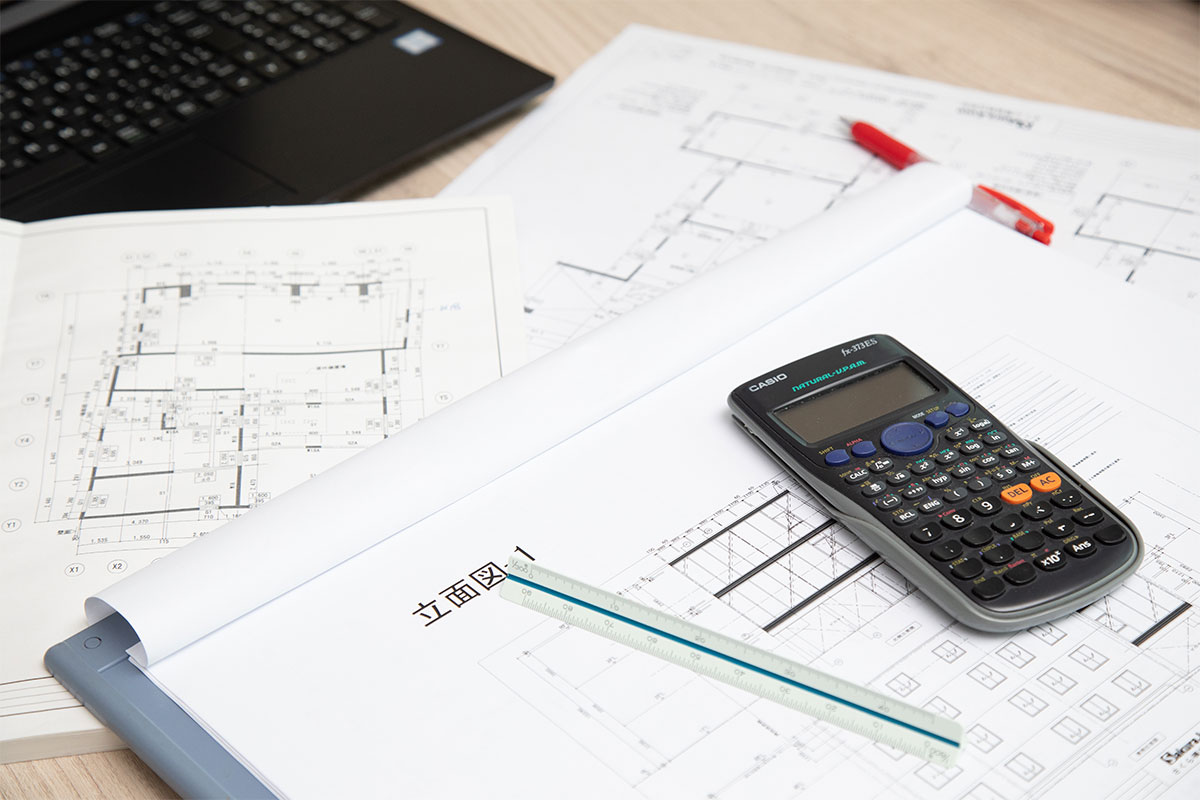
TSUYOKU’s goal is to create houses that exceed earthquake resistance standards and do not cause major damage. At the same time, we repeatedly conduct case study analysis and estimate construction costs necessary for high earthquake resistance, and create optimal designs from both earthquake resistance and cost perspectives. Furthermore, by calculating the “response displacement” required in the analysis of skyscrapers and visualizing the level of damage to buildings, we aim to create buildings that can continue to be lived in even after a disaster.
The new standard aimed at preventing “Major-Damage” to houses.
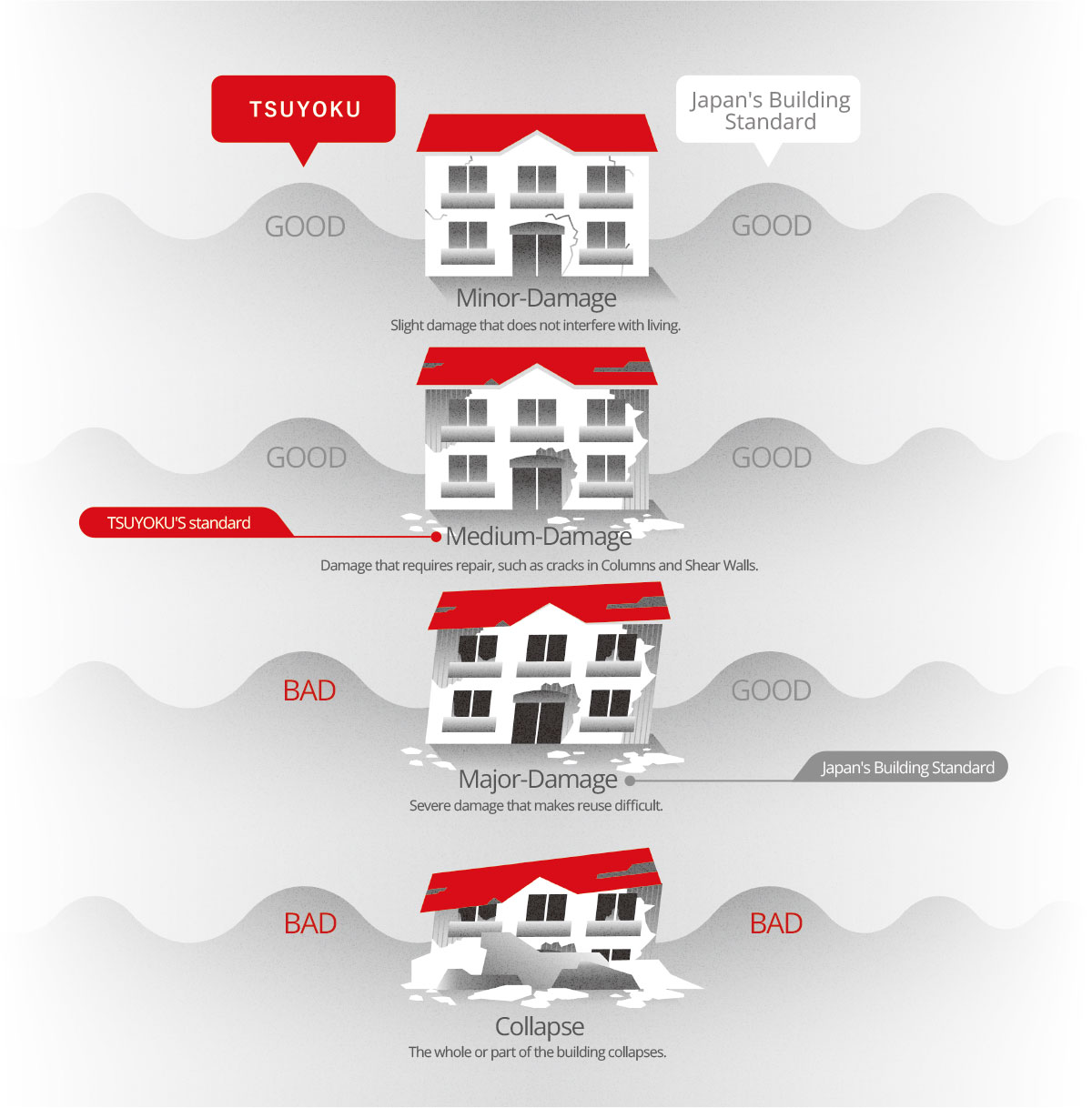
Earthquake-resistance standards are the minimum standards to protect lives (preventing collapse) and are not laws that maintain the ability to continue living in buildings in earthquakes of magnitude 6 or higher.
Buildings are built with the assumption of collapse.
TSUYOKU is designed based on our own standards, with the goal of creating houses that exceed earthquake-resistance standards and do not cause major damage.
Unique criteria based on “Response-Interlayer-Deformation-Angle” required for the analysis of skyscrapers
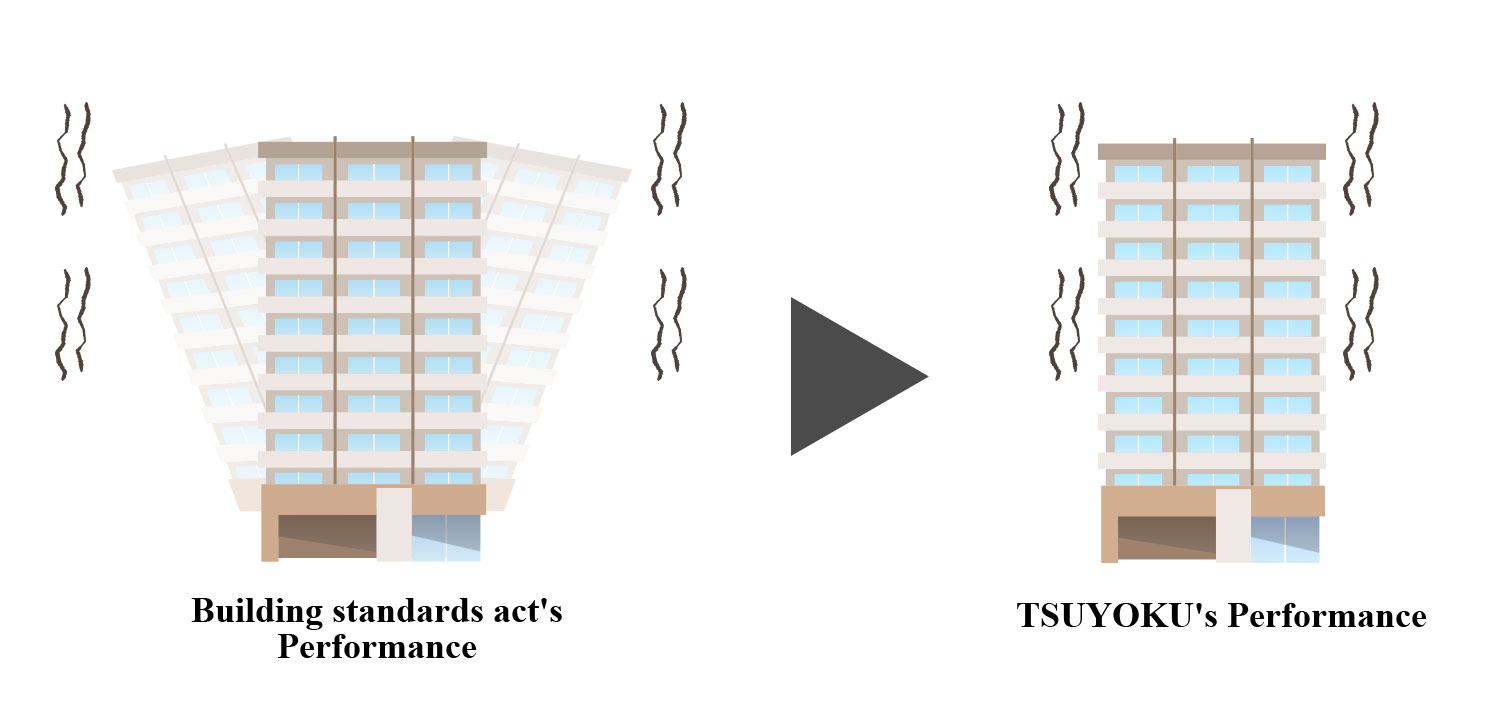
Keeping the deformation of a building to a minimum will prevent damage to walls and doors caused by violent shaking, which will lead to minor repairs after a disaster, which will directly lead to the ability to continue living in the building, and will also reduce damage such as furniture falling over. It also leads to
TSUYOKU has established the size of the “Response-Interlayer-Deformation-Angle” as an acceptance criterion.
This “Response-Interlayer-Deformation-Angle” is not calculated for ordinary houses, but is an item required for buildings that require advanced technology such as skyscrapers.
In addition, by calculating the “Response-Interlayer-Deformation-Angle” it is possible to visualize damage levels that have not been seen before.
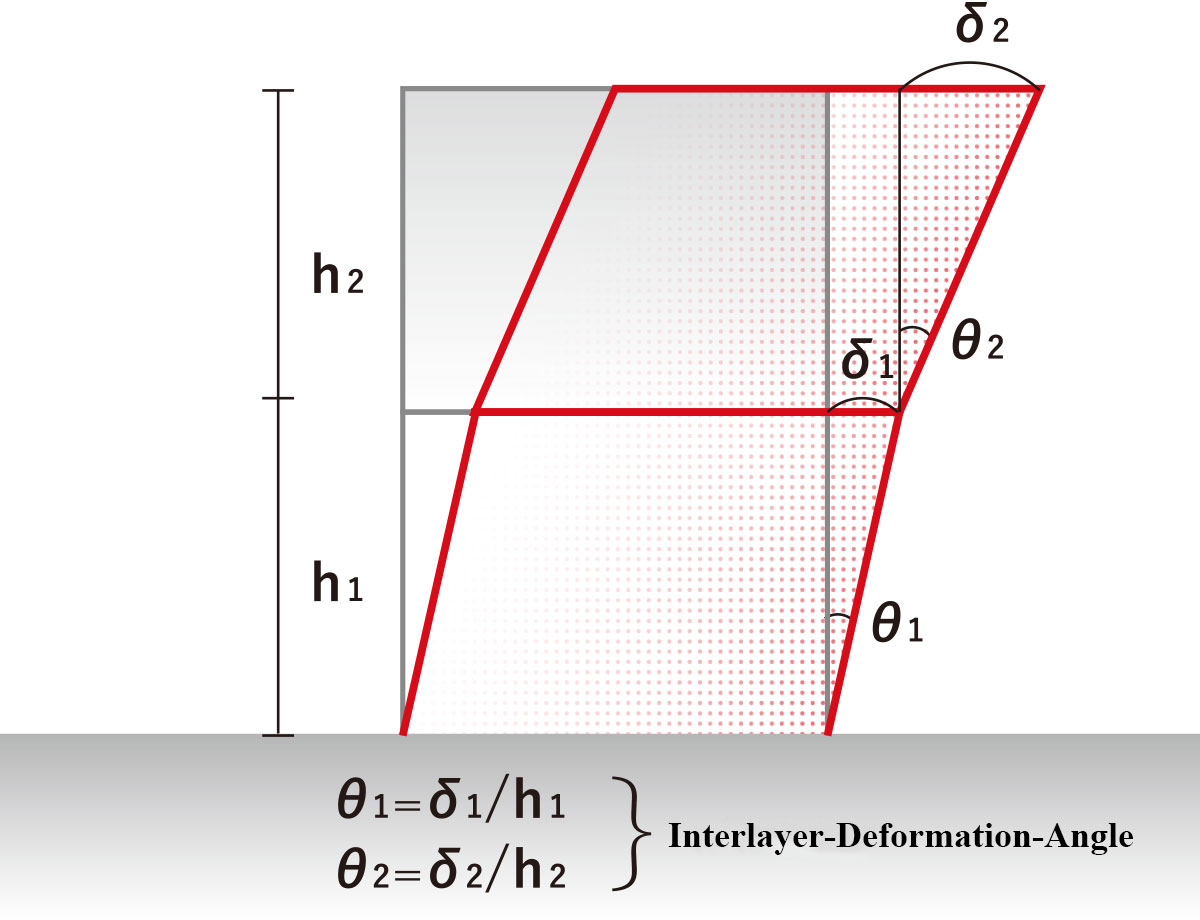
Standards equivalent to Long-life quality housing
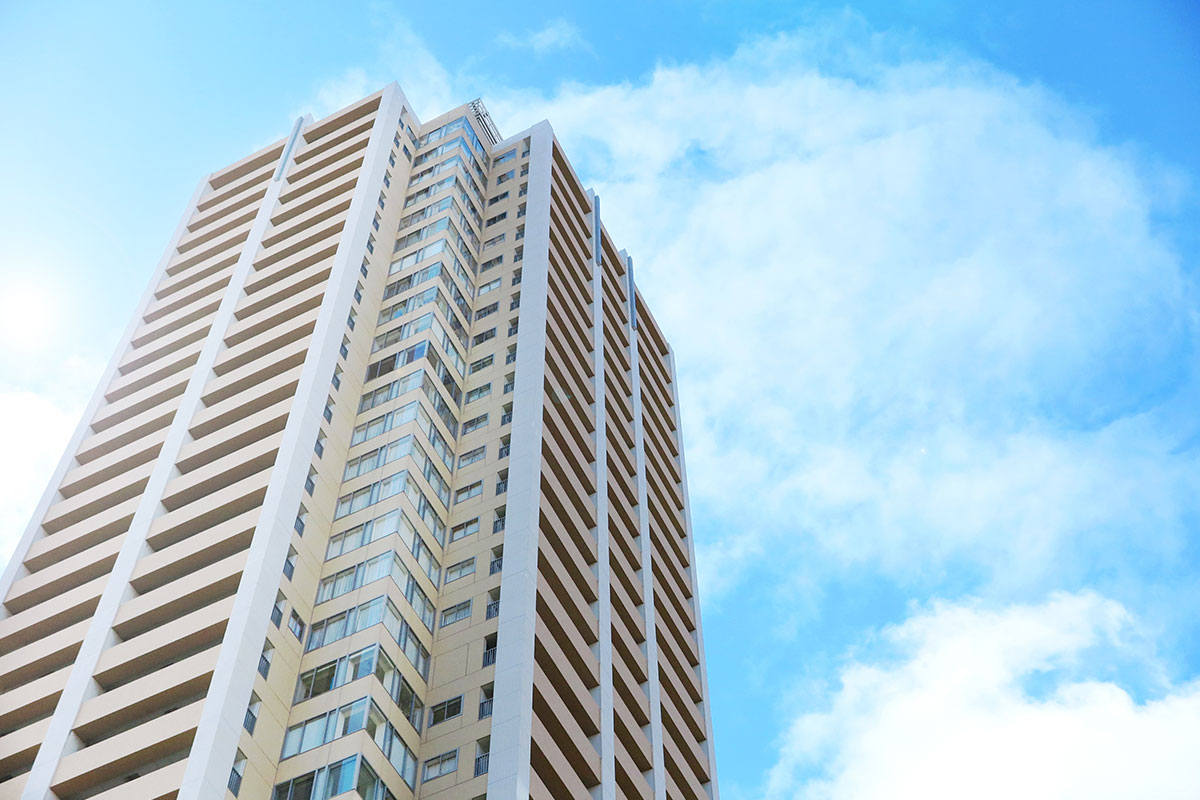
Long-life quality housing is housing that has been certified as a “home that you can continue to live in for a long time into the future” based on standards set by the Japanese government.
There are certification standards for Design, Structure, and Equipment, and conditions for earthquake resistance are stricter than the Building Standards Act, so it takes time to start construction and increases construction costs.
TSUYOKU ensures earthquake resistance equal to or higher than Long-life quality housing without complicated certification procedures. Reduce excessive costs by optimizing the structural framework.
*Long-life quality housing
Based on the “Long-life quality housing Certification System,” properties are certified by meeting conditions such as earthquake resistance, energy efficiency, living environment, housing area, maintenance plan, maintenance management, ease of renewal, and measures against deterioration. While there are benefits such as special tax measures and preferential interest rates on mortgages, there are burdens such as the costs and time associated with certification, construction costs, and future maintenance.
| TSUYOKU | Long-life quality housing | Earthquake resistance standards under the Building Standards Act | |
|---|---|---|---|
| Earthquake Resistance | 〇 | 〇 | △ |
| On-site Quality Control | 〇 | △ | ☓ |
| Structural Cost | 〇 | △ | 〇 |
| Application Time | 〇 | △ | 〇 |
| Scope of Applicability | Applies to all building purpose | residential houses only | Applies to all building purpose |
Making seismic design of skyscrapers more accessible
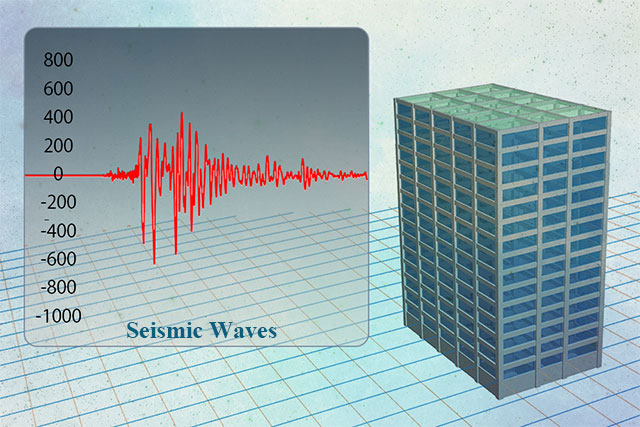
TSUYOKU aggregates design performance data and structural frame optimization patterns from more than 5,000 past projects.
Our strength is that we can propose highly earthquake-resistant, low-cost structural designs for low-rise buildings such as warehouses and general housing, as well as high-rise buildings such as condominiums.
Furthermore, in the future, we plan to incorporate “Seismic-Response Analysis” methods to analyze the seismic resistance of skyscrapers.
Our policy is to apply the seismic design of skyscrapers, which require more advanced earthquake countermeasures, to ordinary residences.

